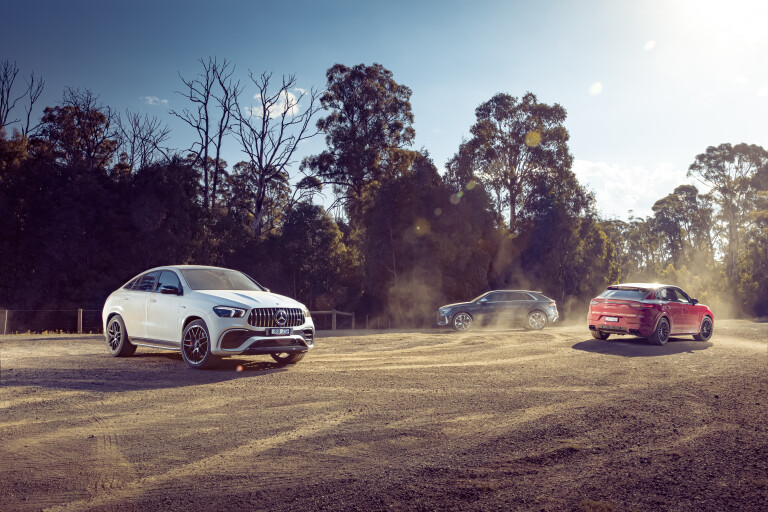
Let’s pretend, for a moment, that Charles Darwin was a petrol head. If we exhumed his corpse and zapped him back to life, what do you think he would say about these three? The Audi RS Q8, Porsche Cayenne GTS Coupe and Mercedes-AMG GLE 63 S Coupe are guilty of seeming even more nonsensical than a performance SUV thanks to their slicked back silhouettes. But they offer a crucial insight into natural selection.
In 2019, the Audi RS Q8 smashed the original R8 V10 Plus lap time around the ’Ring by two seconds when it set a record lap for an SUV. This required an amount of performance engineering that would have been unthinkable to pour into an SUV, let alone a coupe variant, two decades ago.
But when the world is mad enough to will a $390,000 Lamborghini coupe SUV into existence, that should tell you something about the rising demand for these steroidal oddities. Mercedes-Benz says, for example, it has buyers who come to the brand specifically for the AMG GLE Coupe and nothing else.
Although our GLE 63 S Coupe arrives with no record lap time to flaunt, it does break ground in other ways. The fourth-generation GLE is the first time Mercedes-Benz has built the Coupe on a different wheelbase. By shortening it six centimetres, buyers get a more specific product, further differentiating performance and practicality.
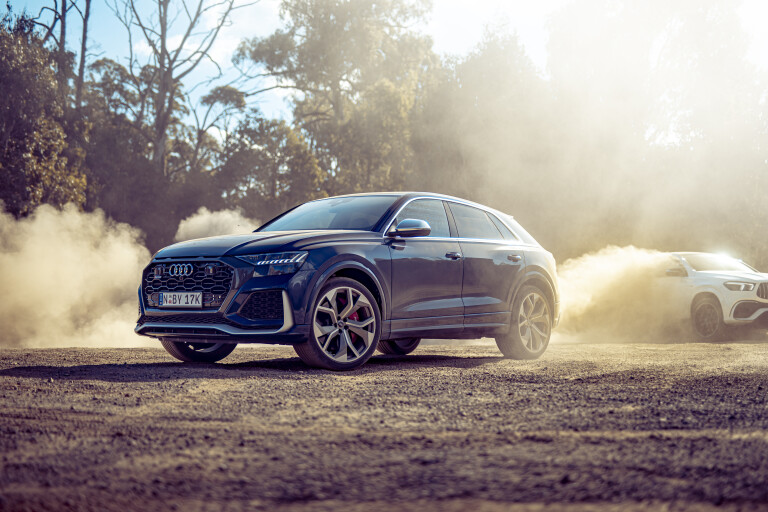
The GLE 63 S also has downsized its engine in the most AMG way possible. It has replaced the former 5.5-litre twin-turbo V8 with another measuring 4.0 litres in capacity and boasts 48-volt mild-hybrid technology. The mild-hybrid tech works similarly to the system already found in the E53 Coupe.
An alternator motor wedged between the engine and transmission can deploy an extra 16kW and 250Nm when needed. The GLE system can also help kick the engine over during start-stop operation, charge batteries, aid engine-off sailing and control idle speed.
Even without the electric motor’s assistance, peak outputs for the GLE 63 S are still 20kW and 90Nm higher than the old GLE 63 S, totalling 450kW and 850Nm. There’s a nine-speed automatic bolted to the back of the 4.0-litre V8 with an all-wheel-drive system that’s claimed to infinitely vary between all-wheel and rear-wheel drive.
Dynamically the GLE 63 S relies on adaptive air dampers. There are also new active anti-roll bars that are plugged into the 48-volt system. New dynamic engine mounts promise a wider spread of talents, while an electronically controlled rear LSD aids traction on the massive 325mm rear tyres.

"MERCEDES-BENZ says it has buyers who come to the brand for the AMG GLE coupe and nothing else"
Our tester GLE 63 S scores 22-inch wheels. They hide six-piston brake calipers at the front. The discs are drilled, slotted and ventilated. That’s not all, either, with a performance exhaust and a 280km/h top-speed also included.
This list of performance goodies is backed by an equally exhaustive list of technology and interior equipment that set the GLE 63 S Coupe at $225,500 before on roads.
It is astonishing to think the Audi RS Q8 costs less while aping a Lamborghini Urus underneath. It uses the same 4.0-litre twin-turbo V8 with a 48-volt mild-hybrid system. Albeit, the engine is de-tuned to produce 441kW and 800Nm. But the RS Q8 rides on the same MLB Evo platform as the Urus where the key ingredients of its performance arsenal are shared.
Take, for instance, the active anti-roll bars that de-couple between corners, the torque-vectoring rear differential, 10-piston front brake calipers, and eight-speed automatic bolted to the back of the V8. The RS Q8 is also ostentatious, if not for the Q8 bodyshell that is pumped 10mm wider to fit 295mm tyres underneath each wheel guard.

Australian models score 23-inch wheels as standard, while RS-tuned air suspension offers 90mm of ride height adjustment for a stance that ranges between rock-dodging or apex-clipping. Finally, rounding out the RS Q8’s performance equipment are systems like variable-ratio front steering, all-wheel steering and an RS-specific exhaust.
Despite a healthy list of safety, technology and interior luxury equipment doing well to fatten the RS Q8’s value, it still splits this comparison’s trio on price. At $208,500 before on roads, the RS Q8 initially seems like good value against the Mercedes-AMG GLE 63 S, until you meet our next contender.
Porsche launched the Coupe version of its Cayenne in late 2019, but the GTS variant arrived only late last year. With the Cayenne already copping a fair few changes to suit the Coupe body style, like a lower roof, longer body and wider stance, the GTS ties everything together with a selection of the best bits from the range.
The GTS harbours the same 4.0-litre twin-turbo V8 used in the Cayenne Turbo, which is also closely related to the engine in the RS Q8. It is tuned down to 338kW and 620Nm. The GTS has also been lowered 10mm on three-chamber adaptive air suspension, scores active torque vectoring, 21-inch RS Spyder design wheels and rear brake discs pinched from the E-Hybrid.

Transmission-wise, the GTS comes with an eight-speed automatic instead of a lightning-quick PDK unit for towing higher loads. But with top-level chassis technology saved for the Cayenne Turbo Coupe, like active-roll bars and 10-piston brakes, this allows the GTS Coupe to undercut the GLE and RS Q8 on weight and, more importantly, price.
At $197,800 before on roads, it’s $28,100 cheaper than the Mercedes-AMG GLE 63 S and almost $11K less than the Audi RS Q8. And the price is not the only class the Porsche finds itself alone in, as we’re about to find out on the drag strip.
Even with Sport Chrono, Porsche says the Cayenne GTS Coupe will hit 100km/h from rest in 4.5 seconds. It says a lot about the company you keep when that seems underwhelming. However, Porsche tends to under-quote performance times, so we’re hoping it might put up a fight.
Out on the drag strip, the GTS nails its claimed 0-100km/h time right away, freeing up time to experiment with drive modes for an ever better launch. With ESC switched off, the dampers in Sport and the automatic in manual mode, the extra revs allowed in the first gears whittle the Porsche’s 0-100km/h sprint down to 4.37sec. It then storms on to the 400m line in 12.65sec at 175.6km/h.
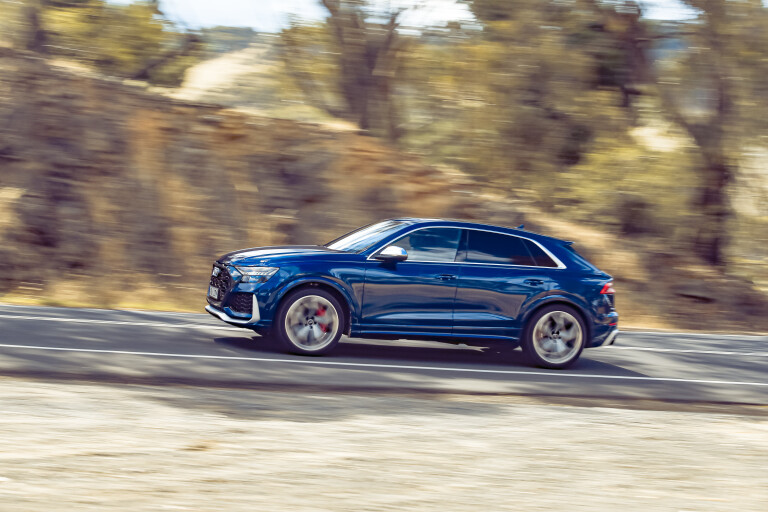
Switching to the Audi, it feels less calculating about its approach to a straight-line run. Although you need to set the ESC and transmission in Sport, it simply drums up a couple thousand engine revs then lets go with slingshot-like ferocity.
As four fat tyres unleash 800Nm worth of grunt, the Audi registers numbers that are Porsche-shattering. Triple figures arrive in 3.8 seconds. It is well into fourth gear at 400m, so a pass of 11.9sec at 187km/h is hardly surprising given how rapid it feels.
With the Cayenne GTS Coupe firmly in the rear view, the stage is set for a showdown with the GLE. The GLE boasts more power and torque, weighs less and is alone in having the advantage of a mild-hybrid system that can chip in grunt when necessary.
Spin the drive mode dial under the GLE’s steering wheel to ‘Race’, disable the ESP, load the brake and dial up the revs. We brace ourselves for a physical assault as the GLE 63 S tries to ground its massive grunt. But the GLE refuses to build beyond 2500rpm and lumbers from the line without the fury we anticipated.
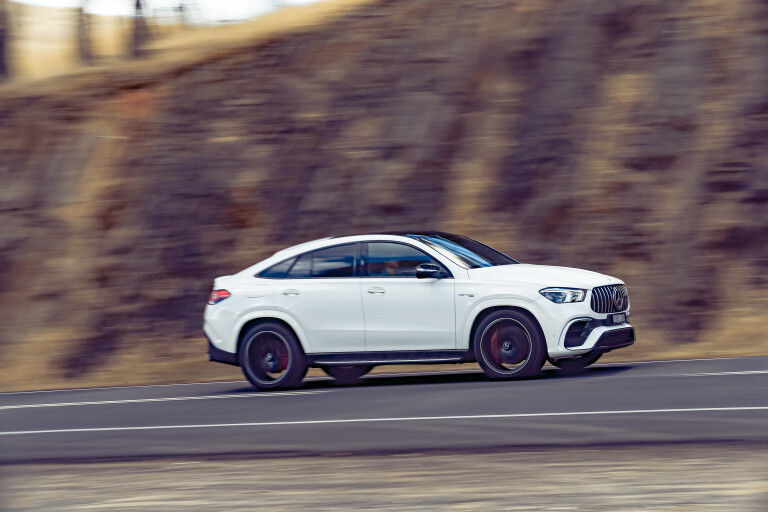
As it turns out, the wet-clutch nine-speed transmission, or MCT, found in the GLC 63 S or C63 S that allows for much higher stall revs per minute is not compatible with the GLE’s new integrated starter motor. So AMG employs a traditional torque converter here instead that isn’t equipped with launch control.
You can try to build boost on the brake, but the GLE 63 S Coupe cannot create the same explosiveness. It manages a 4.2sec run to 100km/h from rest, four tenths slower than the claimed time, and trails by a similar deficit at 400m with a 12.4sec pass.
Although the GLE fights back when it comes to rolling acceleration, matching the Audi’s 2.4sec 80-120km/h time and managing 187km/h across the line, a question mark remains on whether the electric motor helps.
Although the new GLE 63 S produces 850Nm from 2500rpm to 4500rpm and could theoretically make 1100Nm when the motor is producing its full 250Nm, AMG refuses to quote a combined figure because the battery isn’t large enough to supply a boost every throttle blast.
Naturally, the Porsche Cayenne GTS Coupe trails behind both the Audi and GLE on a roll, accelerating from 80km/h to 120km/h in only 2.81 seconds. But these roles reverse in corners, where the Porsche’s weight advantage counts for much more.

With punishing braking zones, nose-heavy hairpins and high-speed sweepers, our test loop rewards sturdy brakes, crisp steering and good traction. The Porsche comes alive here. Although it has smaller brakes, which equals fractionally longer stopping distances, they are more responsive and accurate.
The Porsche also steers with incredible accuracy that belies its size and variable-ratio setup. It’s the most direct system, dialling you into the grip levels of its front Pirellis. This gives you the confidence to find its limits quickly and use the chassis balance to transition weight on to the outside rear.
Because the Porsche has less mass to settle, you can stomp the throttle earlier, helping to virtually eliminate any power disadvantage between corners.
The Audi, by contrast, is a techno-laden point-and-shoot device. Its twin-turbo V8 pulls hardest deep in the rev range. Traction is absolute. That said, it also is a big step down in involvement. Throttle tip-in is vague, brake feedback is soft, the steering also relies too heavily on the all-wheel steering system for point – which can be unpredictable.
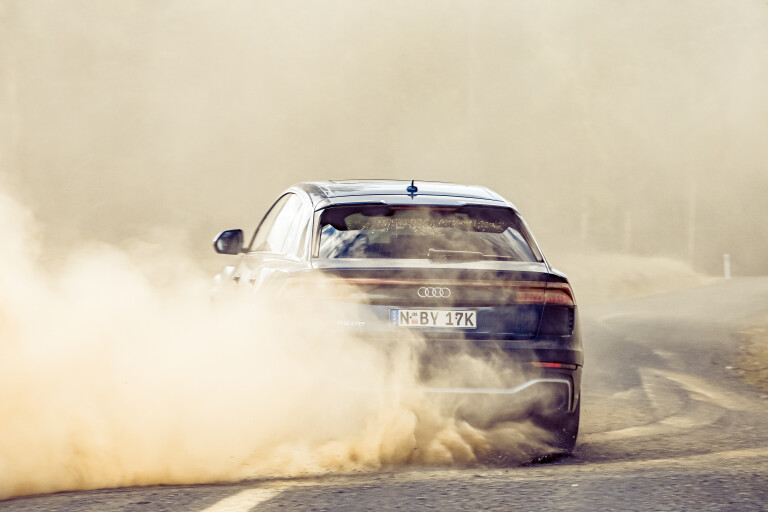
The GLE, meanwhile, is a mixed bag. The steering is sharp and incisive, but it feels like you are sitting ahead and on top of the front wheels compared to the Audi and Porsche. And despite the active-roll bars doing good work, the GLE feels considerably heavier in corners.
Brake feel is also lacking because it’s as if engineers gave 20 per cent of the braking force to the mild-hybrid system’s regenerative ability. On the other hand, traction is good, but you have to wait for the lumbering GLE to point itself the right way.
When it comes to choosing a winner, a lack of accessibility shadows the GLE’s other attributes. It doesn’t help either that the typical edge we’d expect from an AMG 63 S anything has been softened off. It can’t match either the Porsche or Audi for noise. Nor is the torque converter automatic as crisp as a wet-clutch version.
Technophiles will be drawn to the GLE for the gizmos inside. Packed with everything from massage seats to double screens with Mercedes-Benz’s latest MBUX software, it’s capable of displaying swathes of information – even if the steering wheel and centre console still are finicky as access points. But, day-to-day, the 22-inch wheels spoil the GLE’s ride and have a tendency to tramline.
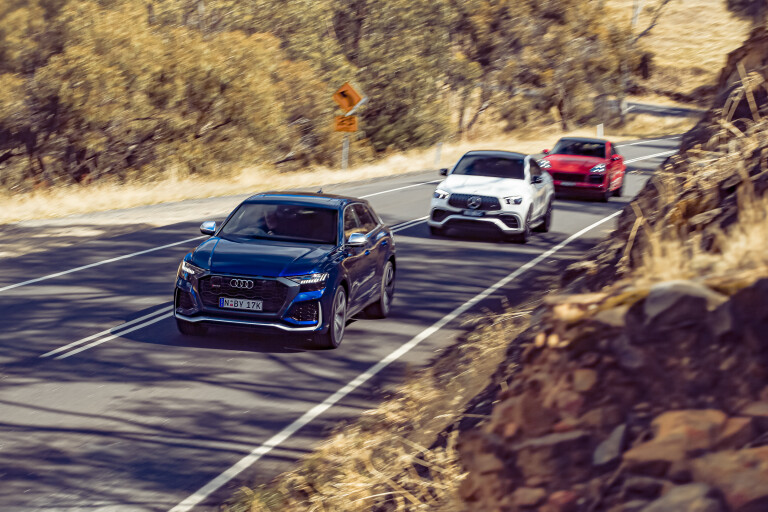
For all the promise of the AMG mild-hybrid system, it is ironic the Audi RS Q8 powertrain is more appealing. The RS Q8 both out-muscles and out-bellows the AMG. And in a straight line, the RS Q8 leaves both its rivals for dead.
The RS Q8 also shines as a well-rounded package. Front leather massage seats, a more concise interior layout and a spacious rear row make it a great place to sit inside. And although it cannot match the Porsche for chassis purity, the Audi still allows good road comfort – on 23-inch wheels (!) – and manages a handy turning circle.
Smaller 21-inch wheels rob the Cayenne GTS Coupe of some much-needed presence next to the GLE and RS Q8, but when a verdict in MOTOR weighs so much on how a car drives it is easy to champion the GTS.
There is an issue with value. While the GTS is the cheapest ticket here, there is a bit to option on the spec sheet if you want it on a level playing field. For instance, Lane Keep Assist ($1220), four-zone climate control (at $1720), ambient lighting ($850) and the Carmine Red paint ($5000) are all options and otherwise standard on the GLE and RS Q8 – except the paint.
But you can sense Porsche invested the most resource into the GTS’s dynamic package. From a cosseting ride to predictable, involving handling, it has the talent to overcome a lack of grunt. Although a big part of it wants for the presence and practical package of the RS Q8, the Cayenne GTS Coupe pips it overall, even if by a smidge. Survival of the fittest, Mr Darwin called it.
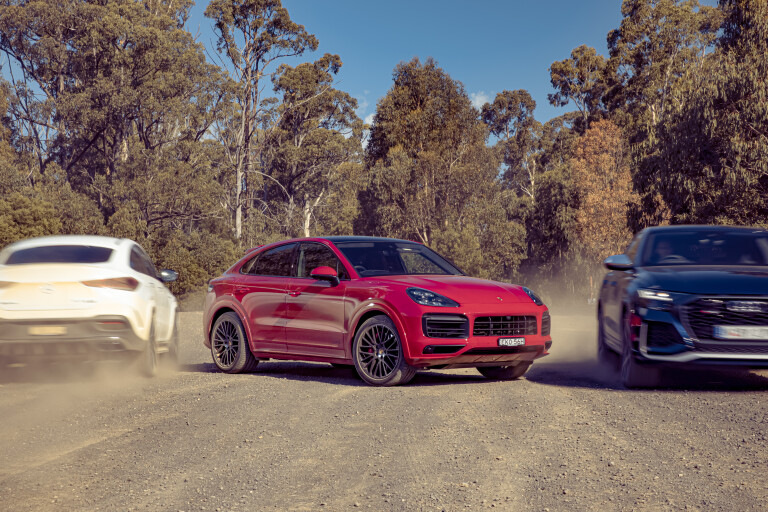
Mild at Heart
Audi says the RS Q8’s mild-hybrid system can harvest up to 12kW, but the belt-driven alternator connected to the 4.0-litre V8 cannot return power to the crankshaft. It instead increases the speed range for start/stop operation and is claimed to save as much as 0.8L/100km during everyday driving. The Porsche Cayenne GTS Coupe, meanwhile, makes do without a mild-hybrid system, and uses a converter to bump its 12-volt circuit up to 48 volts in power when equipped with electro-mechanical active roll bars.
Semi-detached
In certain conditions all three of these fuel-chugging monsters can drop half their operating cylinders to tighten their belts on consumption. For the GLE, this happens when the powertrain is in Comfort mode and the engine speed is between 1000 and 1350rpm. It shuts down cylinders two, three, five and eight. For the Cayenne GTS Coupe, the deactivation happens under 3000rpm and up to a torque output of 235Nm. Meanwhile Audi says it occurs “at low to intermediate load and rpm in the upper gears”.

COMMENTS